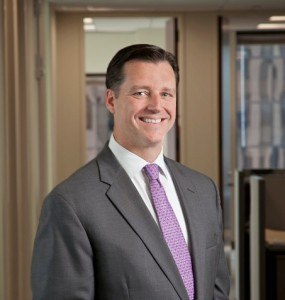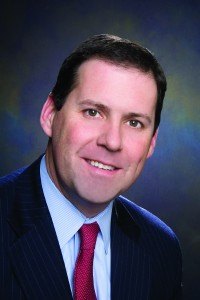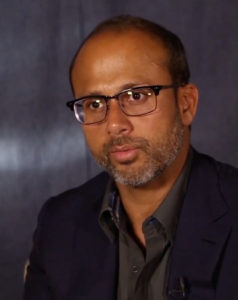After getting the go-ahead to build a new insurance company, BHSI’s founding executive team—Peter Eastwood, president and CEO; David Bresnahan, executive vice president; David Fields, executive vice president; and Sanjay Godhwani, executive vice president—had the luxury of starting a company from the ground up, one with an enviable balance sheet and no internal legacy issues to worry about.
Executive Summary
In June 2013, Berkshire Hathaway CEO Warren Buffett said his firm was “moving into commercial insurance in a substantial way and we are here to stay.” Within 14 months after launching Boston-based Berkshire Hathaway Specialty Insurance (BHSI), the business was profitable. Six years after its launch, BHSI has more than 1,000 employees, a physical presence in 14 countries and 29 cities, and multinational capabilities around the globe. How did this happen in so short a time? In a conversation with Carrier Management, three of BHSI’s original founders—Peter Eastwood, Sanjay Godhwani and David Bresnahan—talked about their roll-out strategy and what has been instrumental in this successful launch.When they knew they could use the Berkshire Hathaway name, it was like adding icing on the cake. The Berkshire Hathaway brand is not only a strong and highly regarded one, it is also one of the most trusted names in the business. But why the use of specialty in the name? Eastwood said it was because there are a number of insurance businesses within Berkshire Hathaway, so the company needed a distinguishing moniker. However, the choice of specialty in the name isn’t as serendipitous as Eastwood makes it seem.
Eastwood said he’d noticed over the years that the growth rates and underwriting profitability in the specialty and excess and surplus lines markets were generally better than in the U.S. admitted market. In the U.S., the E&S market is unique because it offers insurers freedom from regulated rates and state filings. It’s particularly useful to businesses or industries that find it difficult to obtain insurance coverage in the admitted markets. Products and services can be designed and implemented quickly, without waiting for regulatory approvals.
Specialty also appealed to the BHSI founders because it meant they could choose the areas they wanted to focus on (for example, BHSI does not participate in the workers compensation arena in the U.S.) and they could focus on hiring underwriters who knew their businesses backward and forward, inside and out.
“When dealing with risks in the large accounts market, which is where BHSI began, specialization and deep product and underwriting knowledge are essential if one is to be successful over the long term,” according to Eastwood. “With highly experienced and knowledgeable underwriters joining the team early on, we knew we could create products and services quickly and set ourselves on a path toward sustainable underwriting profitability.”

There was one more key factor.
“Further, all four of us have worked together over the years in the specialty lines insurance business, so we knew the value of specialization, as well as the importance of building a collaborative culture that would allow the company to come up with the best possible solutions,” Eastwood said.
BHSI wrote its first policy on the second day of its third week in business, and it’s never looked back, expanding with a rapid pace all over the world. BHSI now has 12 offices across the U.S. and 17 around the world, including in Dubai, Dublin, Hong King, London, Melbourne, Munich, Paris, Perth, Singapore, Sydney and Toronto.
In the U.S., BHSI is organized around three broad product segments. Property is headed by Godhwani, while Casualty and Financial Lines are under the leadership of Bresnahan, with Fields acting as the global chief underwriting officer. Each broad product segment has a number of specialty products within it, and the company also offers other specialty lines products that fall outside of the three larger segments, such as surety, leisure travel insurance and employer medical stop loss insurance.
Eastwood said they wanted to satisfy if not all of a customer’s needs, something very close to it. When asked if there isn’t an inherent conflict between satisfying all of a customer’s needs and specialization, Eastwood said there is in fact inherent synergy in the company’s commitment to “going wide and going deep,” which is BHSI-speak for addressing a customer’s broad and diverse needs with deep and specialized underwriting expertise.
Bresnahan knew BHSI had another early advantage. “Because of the bloated ratios and inefficiencies in the insurance industry, we had a meaningful advantage—a clean slate,” he noted. “We’ve aimed to achieve a market-leading expense ratio and have been able to capitalize on our responsiveness with innovative operations and a new technology build-out.”

The company had what it considered the luxury of building systems from scratch—unhindered by any legacy systems. Similarly, it’s processes and procedures could be built from the ground up. “At BHSI, you will never hear ‘we’ve always done it this way,’ which keeps the door wide open to new thinking,” he added.
Defining BHSI’s mission was simple, according to Eastwood. “Consistent with Berkshire’s expressed interest, we’ve set forth to build a market-leading global, property/casualty and specialty lines insurance company. One that operates with a long-term focus, consistent with the overarching approach that’s taken by Berkshire Hathaway and its leadership,” he said. “We’re doing so by being customer- and ‘teammate-centric’ in our approach, which means we have to show up and be solution oriented, both passionate and humble, and earn the trust and respect of our various constituencies.”
Wanting to be a customer-centric company, BHSI purposely chose to focus on building a culture around a “physical presence”—meaning people talking to people, meeting with people, fostering close customer relations.
“We wanted to build a ‘forever’ kind of relationship with our customers—relationships that are imbued with integrity, trust and substance. Too much of the business world today is unnecessarily complex, and it’s preventing value creation from occurring,” said Eastwood.

“We’ve focused on keeping things simple and being frictionless to our business partners, all with the belief that by doing so we can create value for them and Berkshire Hathaway. We have maintained a purposely simple approach to business—there’s nothing unnecessary in the mix, whether you’re talking about approval processes, policy wordings or our organizational structure. We wanted to get to—and keep focused on—the heart of the matter: the challenges our customers face in building their businesses,” he noted.
Godhwani recalled how being part of Berkshire Hathaway helped create opportunities to be heard.
“People were curious about what we were going to do,” said Godhwani. “They wanted to see us and talk about our vision for the business. They wanted to hear how we could help them. This natural curiosity was critical in bringing our message of customer-centricity to the insurance industry. It not only gave us a seat at the table, it gave us a chance to explore the issues and challenges on our customers’ minds.”
To reinforce the customer-centric message, BHSI’s first hire after the four-member team of founders was a global chief claims officer—the earliest indication of BHSI’s firm belief that even more than the insurance policy, “claims is our product,” said Godhwani. The company named respected industry veteran Dave Crowe to the post and set about building a claims organization focused on “doing the right” thing: paying claims without a lot of unnecessary friction with brokers and customers.
“While our financial strength and ability to pay claims was evident, we intended to make it clear that we were going to set a high bar for claims handling excellence,” said Eastwood.

BHSI executives took all of this a step further by defining exactly what they meant by a customer-centric operation, one focused on “doing the right thing.” They developed core values and established a series of guiding principles to define just “who” BHSI was. “We take great care to hire people who demonstrate both excellent capabilities and great character. We always choose simplicity over complexity. We emphasize individual excellence in a team framework,” said Eastwood, citing a few of the core values and guiding principles that are BHSI’s operating framework for such basics as decision-making, what to do and how to do it.
With its clearly defined sets of values and cultural characteristics, BHSI set expectations at the individual team member level, at the company level and at the customer level. They are able to measure performance in terms of both what was accomplished and how it was accomplished.
The Choices We Make
When asked why there was such a focus on culture at the beginning, Eastwood recalled when he began thinking about culture seriously and realized just how important it is to the success of a company: “I was at AIG during a difficult time in its history. It was during that time that my views on the importance of people and their impact on an organization and its performance galvanized. At that time and in a very pronounced way, I realized that customers, brokers and team members have choices. No one has to work with you or for you. It’s a choice they make, and you have to earn it.”
Eastwood and his team talk a lot about choice. They say they know customers and brokers have choices and don’t have to work with them. They know they have to “earn the business” because there are other companies out there vying for that business. They are also aware that employees have choices. “Having a set of well-defined core values and guiding principles is important when you’re building a company,” said Eastwood. “And doing it early on is even better.”
Back to the Future
In the 1990s, there was a commercial for United Airlines called “The Speech.” The CEO of a company had called the company’s executives together to say that things had to change. A long-term client had fired them that morning, saying he didn’t know the company anymore. The CEO said he knew why. Everyone was depending on the phone and fax machine to get business done. Instead, as he handed out airline tickets to everyone in the room, he said they were going to visit and talk with every single client.
At that time in the ’90s, it was the phone and the fax. Today, it’s email and texting. What Eastwood and his team talk about is re-establishing the value of relationships—the “forever” kind, as Eastwood called them.
Maybe it’s back to the future. Maybe personal connections are still valued. Maybe the handshake and in-person chats didn’t really go away. The question is whether this approach is scalable globally and whether BHSI can replicate it over the next five and 10 years and into the future. (For Eastwood’s view on the question of sustainability, see the sidebar, “How to Keep It Going.”)




















 Progressive Gains as Drivers Shop Around for Auto Insurance—Again
Progressive Gains as Drivers Shop Around for Auto Insurance—Again  Chubb Gets Its Paws on Pet Insurance MGA
Chubb Gets Its Paws on Pet Insurance MGA  USAA to Lay Off 220 Employees
USAA to Lay Off 220 Employees  Study: Average Cyber Breach Insurance Coverage Gap is 350%
Study: Average Cyber Breach Insurance Coverage Gap is 350% 








